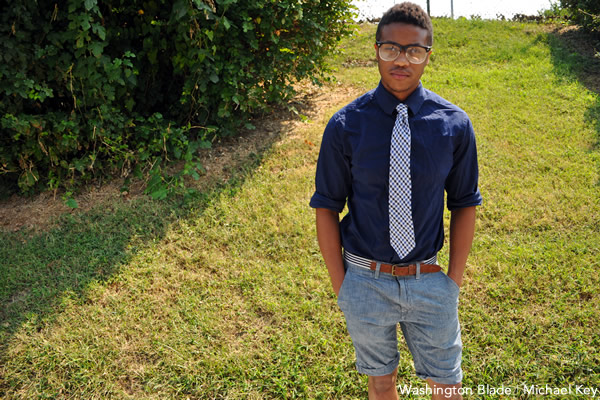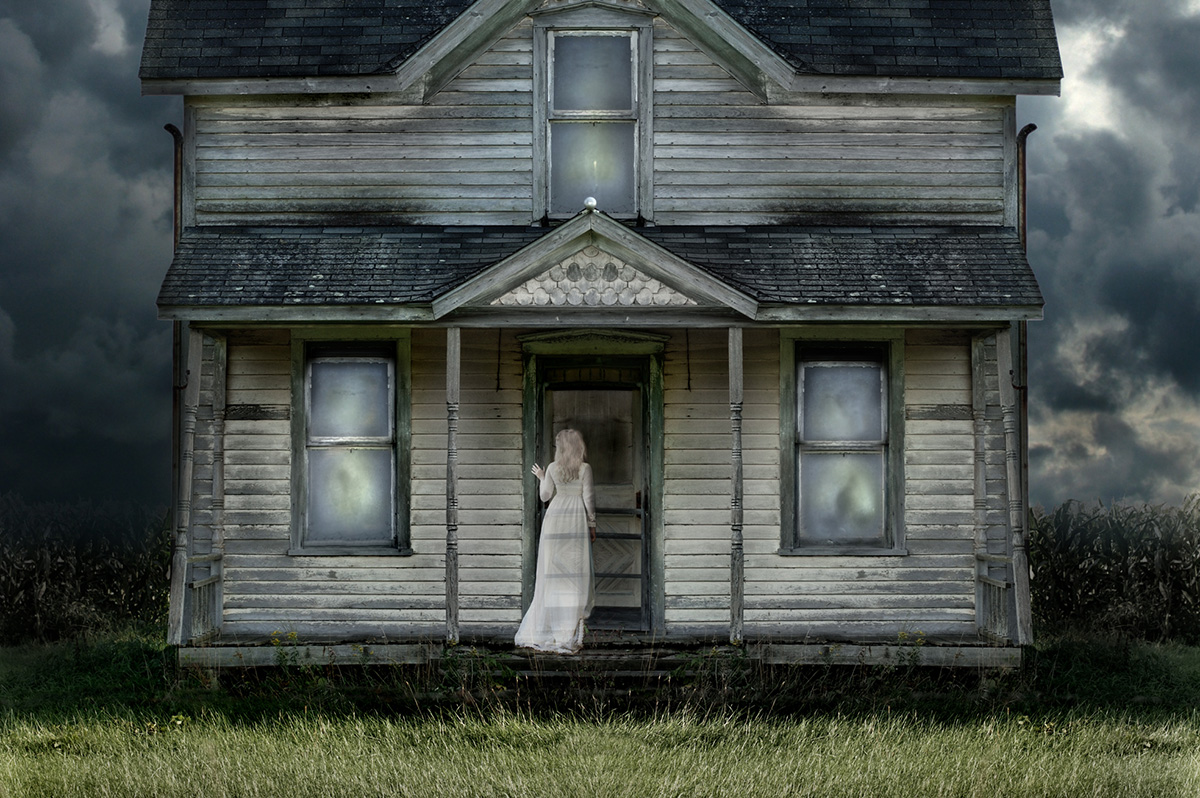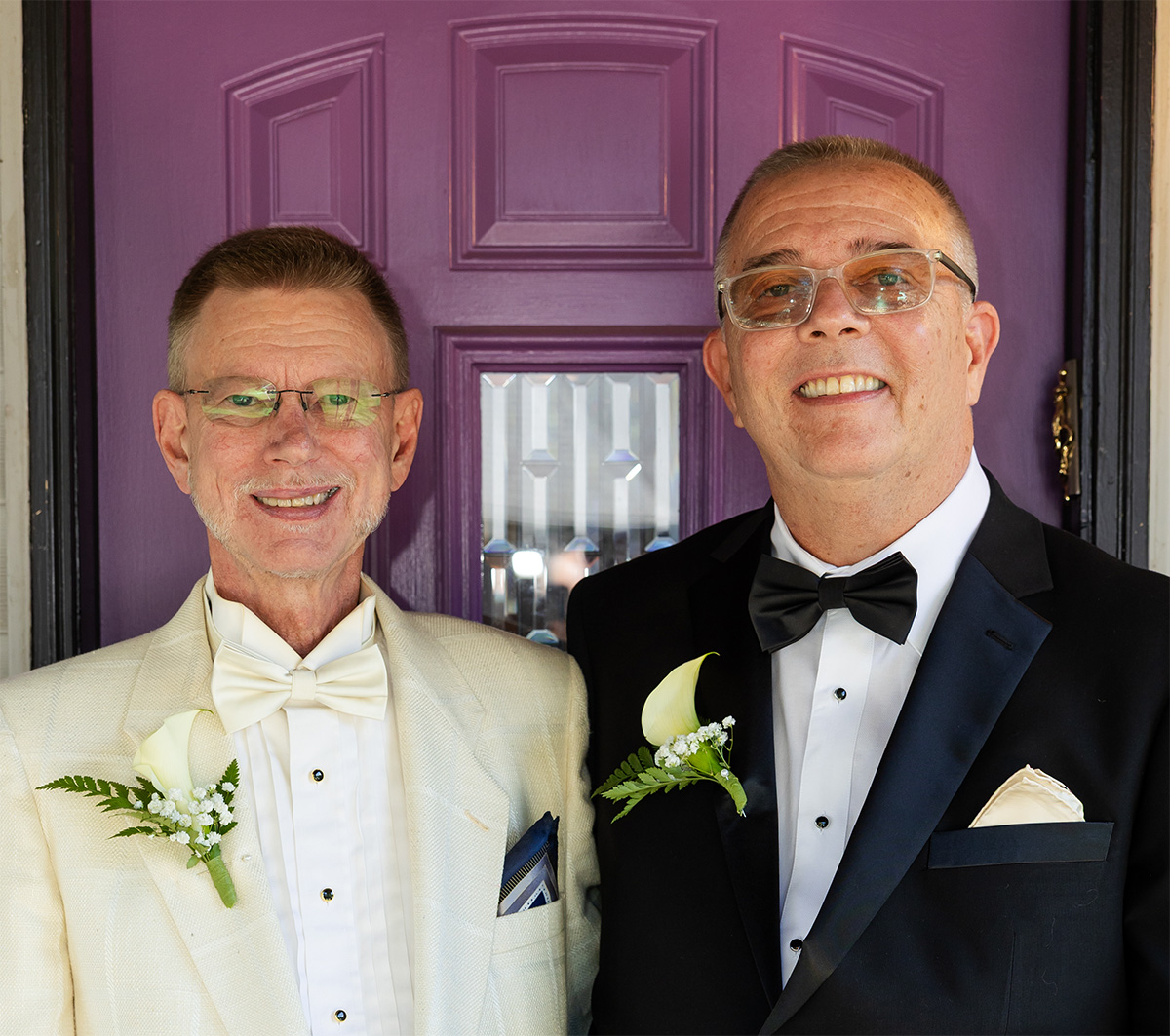Living
Queery: Kye Allums
The former GWU basketball player and trans advocate talks to the Blade


Kye Allums (Washington Blade photo by Michael Key)
When Kye Allums told his fellow players on the women’s basketball team at George Washington University during his sophomore year that he wanted them to start using male pronouns and his new name it took a little time for them to get it.
“They laughed at first,” the 23-year-old St. Paul, Minn., native says. “They were like, ‘Yeah, you woke up, now you’re a boy, whatever,’ but when they knew I was serious, they didn’t understand it at all, but they started seeing how it was affecting me. I was smiling then. In the end, they started to switch because they could see using the appropriate name made me happy and in the end they wanted to support me.”
Allums says the issue of being male on a women’s team “didn’t bother me at all.”
FIND MORE OF THE WASHINGTON BLADE SPORTS ISSUE HERE.
After graduating, Allums (imenough.org) parlayed his career into trans advocacy work — mostly visiting college campuses where he spreads his belief that “I am enough — what I say, what I feel, that is enough. You shouldn’t have to tweak yourself to make somebody else happy.” He splits his time between New York and Washington when he’s not traveling (which he says was about 93 percent of the time in the last year). He just got back from London and Scotland where he worked on a documentary about the experiences of trans people around the world. He hopes to finish it with a trip to the United Arab Emirates and Thailand in December.
Allums is single — one of the downsides of constant travel, he says. He enjoys writing, shopping for shoes, Netflix and traveling in his down time.
How long have you been out and who was the hardest person to tell?
I’ve always known who I was. However, I didn’t always have the vocabulary to describe myself. When I was 14, I came out to my friends as a gay female. The hardest person to tell was my best friend at the time. In the end I never told her. I let someone else (who loved to spread other people’s business) tell her for me. When I was 18, I found out what being a trans man meant. Then I came out to myself. Honestly I’d say coming out to myself was harder than coming out to anyone. I had these negative views of trans people and what I thought it meant and I hated that I fit under that “label.” Little did I know that being trans is simply customizing my identity to what I want it to be. Not my parents, friends or society. Me. I get to be who I choose to be and I love everything about that. Oh yeah, and I recently came out as a gay man!
Who’s your LGBT hero?
That’s difficult. There are so many people in the LGBT community who have helped me get to where I am today, and are still doing so as I write down these answers. The first people who come to mind are:
L: Pat Griffin, Sue Rankin and Helen Carroll
G: LZ Granderson and Cyd Zeigler
B: Anna Aagenes and Robin Ochs
T: Laverne Cox and CeCe McDonald
What’s Washington’s best nightspot, past or present?
I love a crowd and I love to dance. Town nightclub (on a Friday) has yet to let me down.
Describe your dream wedding.
Marrying my best friend and love of my life, all my friends being there and my mother in attendance with love and support.
What non-LGBT issue are you most passionate about?
Racial justice.
What historical outcome would you change?
Slavery and all of the deaths that occurred/are still occurring because of the “color value system” we have been taught to embrace.
What’s been the most memorable pop culture moment of your lifetime?
Seeing Usher at the Verizon Center.
On what do you insist?
Do what makes you happy. Life is too short.
What was your last Facebook post or Tweet?
I was in London for the first time working on a project so I asked this of my Facebook friends: “For those of you who have been to London before where exactly is the gayborhood?” It was well worth asking.
If your life were a book, what would the title be?
“It’s Not a Guy Thing, It’s a Kye Thing”
If science discovered a way to change sexual orientation, what would you do?
Continue to be the person I worked so hard to love unconditionally — a black gay man.
What do you believe in beyond the physical world?
I believe there is something greater than us and this world we live in.
What’s your advice for LGBT movement leaders?
Don’t reinvent the wheel. I’ve seen many people go into this work, myself included, making their lives harder than it has to be. Many times, something that we are thinking of doing has already been done, or is being done right now. Look to collaborate with others and take your leadership and efforts to the next level.
What would you walk across hot coals for?
I would walk across hot coals for my family, a pint of Magnolias banana pudding and Hugh Jackman.
What LGBT stereotype annoys you most?
I don’t know which is worse, assuming that all trans people are straight or that all trans people must have surgery or take hormones to complete “the” transition. Life is a transition. We all transition. Not just trans people. Remember that.
What’s your favorite LGBT movie?
“Noah’s Ark: Jumping the Broom.”
What’s the most overrated social custom?
Men opening doors for women.
What trophy or prize do you most covet?
My siblings loving me as their brother is a trophy and prize in itself. Without their love I don’t know what I would do.
What do you wish you’d known at 18?
Everything I know now. College would have been a lot different if I had this focus and drive that I have at age 23.
Why Washington?
It was the farthest place from Minnesota, and at the time I thought it was cool to live right down the street from the White House, which gets old pretty fast. I have grown to love it though. It’s not as fast as New York and not as chill as Chicago. It’s perfect.
Real Estate
Real terrors of homeownership come from neglect, not ghosts
Mold, termites, frayed wires scarier than any poltergeist

Each October, we decorate our homes with cobwebs, skeletons, and flickering jack-o’-lanterns to create that spooky Halloween atmosphere. But for anyone who’s ever been through a home inspection there’s no need for fake scares. Homes can hide terrors that send chills down your spine any time of year. From ghostly noises in the attic to toxic monsters in the basement, here are some of the eeriest (but real) things inspectors and homeowners discover.
Every haunted house movie starts with a creepy basement, and in real life, it’s often just as menacing. Mold, mildew, and hidden water leaks lurk down there like invisible phantoms. At first, it’s just a musty smell — something you might brush off as “old house syndrome,” but soon enough, you realize those black or green patches creeping along the walls can be more sinister than any poltergeist.
Black mold (Stachybotrys chartarum) is particularly fearsome – it thrives in damp, dark places and can cause serious respiratory problems. It’s not just gross – it’s toxic and, while some types of mold can be easily cleaned up, removing black mold can cost more than an exorcism.
Have you ever heard strange buzzing or seen flickering lights that seem to move on their own? Before you call the Ghostbusters, call an electrician. Faulty wiring, outdated panels, and aluminum circuits from the mid-20th century are the true villains behind many mysterious house fires. Home inspectors can also find open junction boxes, frayed wires stuffed behind walls, or overloaded breaker panels that hum like a restless spirit.
Imagine an invisible specter floating through your home – something that’s been there since the 1950s, waiting for you to disturb it. That’s asbestos. Home inspectors dread discovering asbestos insulation around old boilers or wrapped around ductwork. It’s often lurking in popcorn ceilings, floor tiles, and even wall plaster. You can’t see it, smell it, or feel it—but inhaling those microscopic fibers can lead to serious illness decades later.
Lead pipes, once thought to be durable and reliable, are like the vampires of your water system – quietly poisoning what sustains you. The results of a lead test can be chilling: even a small amount of lead exposure is dangerous, particularly for children.
And it’s not just pipes – lead paint is another problem that refuses to die. You might find it sealed beneath layers of newer paint, biding its time until it chips or flakes away. This is why, when selling a property built prior to 1978, homeowners must disclose any knowledge of lead paint in the home and provide any records they may have of its presence or abatement.
Scratching in the walls. Tiny footsteps overhead. Droppings in the attic. It’s not a poltergeist – it’s pests. Termites, rats, bats, carpenter ants, and even raccoons can do more damage than any ghost ever could.
Termites are the silent assassins of the home world, chewing through beams and joists until the structure itself starts to sag. Rats and mice leave behind droppings that can spread disease and contaminate food. Bats are federally protected, meaning your haunted attic guests can’t just be evicted without proper precautions. And I once had a raccoon give birth in my chimney flue; my dogs went crazy.
Ever step into a home and feel the floors tilt under your feet? That’s no ghostly illusion – it’s the foundation shifting beneath you. Cracked walls, doors that won’t close, and windows that rattle in their frames are the architectural equivalent of a horror movie scream.
Foundation damage can come from settling soil, poor drainage, or tree roots rising from under the structure. In extreme cases, inspectors find entire crawl spaces flooded, joists eaten by rot, or support beams cracked like brittle bones. Repair costs can be monstrous – and if left unchecked, the whole house could become a haunted ruin.
Some homes hold more than just physical scares. Behind the drywall or under the floorboards, inspectors may uncover personal relics – old letters, photographs, even hidden safes or forgotten rooms. Occasionally, however, there are stranger finds: jars of preserved “specimens,” taxidermy gone wrong, or mysterious symbols scrawled in attic spaces.
These discoveries tell stories of the people who lived there before, sometimes fascinating, sometimes chilling, but they all add to the eerie charm of an old home, reminding us that every house has a history — and some histories don’t like to stay buried.
So, while haunted houses may be a Halloween fantasy, the real terrors in homeownership come from neglect, not ghosts. Regular inspections, good maintenance, and modern updates are the garlic and holy water that turn a trick of a home into a treat.
Valerie M. Blake is a licensed associate broker in D.C., Maryland, and Virginia with RLAH @properties. Call or text her at 202-246-8602, email her via DCHomeQuest.com, or follow her on Facebook at TheRealst8ofAffairs.
Advice
Sexual desire is waning, should we open our relationship?
Couple faces difficult choices after seven years

Dear Michael,
When I met my husband seven years ago, I was super attracted to him and we had a really hot sex life.
That feeling has been waning for a while and now I am just not feeling it.
I know that people get older, gain weight, get less attractive over time but that’s not the case here. Ben is as good looking as ever. But I have little desire to have sex with him.
It bothers me that I don’t really want to have sex with the guy I love and want to spend the rest of my life with.
Is this why everyone else I know has an open relationship? Is there something I can do to want to have sex with my husband again?
This is causing major problems in my marriage. I don’t initiate anymore and half the time I find an excuse to not have sex when Ben initiates. He knows something is up but I usually blame it on work stress or not feeling well. I don’t want to hurt his feelings.
Aside from this, I love Ben and we have a lot of fun together. We’re very close, talk about all sorts of stuff, but not this.
Michael replies:
Pretty much everyone in a long-term relationship has to deal with decreased desire at some point.
Sex changes after you’ve been with your partner for a while. Sex is not going to be as easy, hot, and irresistible as it was at the beginning of the relationship. Newness generates a lot of the sexual heat at the outset of a relationship, and when the newness is gone, you don’t easily feel the same sizzling excitement that you felt when you first met.
Unfortunately, the kind of sex that people have at the beginning of a relationship is totally glorified in our culture as the gold standard of sex.
I say “unfortunately” because it’s not possible to consistently have the hot sex of a new relationship, ongoing, with a long-term partner. So if you think that is the best or only kind of sex to have, you will be contemptuous of anything else, and you will be disappointed in your sex life with your partner as time marches on.
But the sizzling sex people have at the start of a relationship is just one way to have sex. If you are willing to be imaginative, and are open to change, there are many other kinds of sex that can be wonderful.
How about sex for emotional connection? Sex for physical closeness? Sex for romance? Sex to celebrate just being together?
So, consider changing (not lowering!) your expectations. Rather than sulking or moping that you don’t want to spontaneously jump Ben’s bones, be open to having sex with your husband that is based more on your relationship and on your love for each other.
Now, here’s a whole other angle to consider: While the excitement of a new partner often fades, there are still ways to generate excitement and passion in a long-term relationship by taking risks and revealing yourself more deeply. Stick with me and I’ll explain.
- You haven’t said anything to Ben about your waning interest. I encourage you to re-think this. You would be much better positioned to tackle this issue collaboratively. Not talking about how stuck you feel is likely to deepen your feeling of shame and fear that something is wrong. Speaking with Ben about what is actually a fairly common couples’ issue could be a relief.
- Ironic as this may seem, the closer two people are, the less comfortable they may be being frankly sexual with each other. Clients often tell me that they are more comfortable expressing their real desires to someone they hardly know (or don’t know at all) than to their significant other. For one thing, the more your partner means to you, the more you may fear rejection if you reveal sexual feelings and desires that might upset or even shock your partner. For another, as couples get closer, sex may start to feel like too much closeness, and avoiding sex may be a way to create some space.
Not speaking up about what is important keeps you distant from your partner and drains your relationship of vitality. A powerful antidote to this: work toward becoming a person who can take risks, tolerate discomfort and uncertainty, and be able stand on your own when you don’t get your partner’s validation.
Talking with Ben, whether it’s about your lack of spontaneous desire for sex, or about sexual interests you may be keeping from him for fear of judgment, would involve your making uncomfortable moves that might lead to Ben’s judgment or even rejection. But doing so would also, of course, allow the possibility of more happening between you sexually. It would also let Ben know you better, thereby deepening the level of intimacy in your relationship. Making these moves could also be inherently exciting, which —guess what—could help to shake you out of your sexual doldrums and bring more passion and life into your relationship.
Similarly, you might start initiating. Even if you’re afraid it won’t go well and even if you’re not feeling it. That is the only way you are going to figure out how to have satisfying long-term sex. Take the need for an erection or orgasm off the table. Sex with your partner should not be a performance. Go for closeness, connection, and what feels good. And challenge yourself to go places that you are uncomfortable about going.
If any of this intrigues you, “Passionate Marriage” and “Intimacy and Desire,” both by David Schnarch, explore how your sexual connection can deepen over time in a long-term relationship.
Finally, with regard to your considering an open relationship as a remedy: Do you think that would enhance the sexual connection between you and Ben?
Michael Radkowsky, Psy.D. is a licensed psychologist who works with couples and individuals in D.C. He can be found online at michaelradkowsky.com. All identifying information has been changed for reasons of confidentiality. Have a question? Send it to [email protected].
Wedding Announcement
Douglas M. Haller and Timothy H. Longnecker wed in Detroit, Michigan
Couple weds in Detroit, Michigan

Douglas M. Haller and Timothy H. Longnecker were married on September 15, 2025 in Detroit’s gay-welcoming suburb Ferndale after 11 years as domestic partners in Midtown Detroit. Julia Music, coordinator of LGBTQ Pride celebrations in Ferndale, served as officiant.
The couple sang stanzas of the 1927 song “Side By Side” as their vows, concluding with an AI Gay Wedding Pledge: “to be Allies pursuing happiness, equality and shared dreams.”
The couples’ families hail from Detroit’s Old Redford neighborhood; Douglas is Irish and French-Canadian, Timothy is German and English. DNA testing confirmed to the couple that each shares substantial ancestry from Ostrobothnia, Finland.
Douglas began his advocacy as a gay cultural and political activist in 1971 by coming out in the disco dance scene of Detroit’s Gay Palmer Park neighborhood. In Washington, D.C. after 1974, he was an interior designer at Georgetown’s Little Caledonia boutique. Douglas became the co-owner of Hermes Antiques with Helen Coutts, a retired English Literature teacher from Redford H.S. On S St. at Connecticut Ave., D.C.’s first Pride celebrations were held in front of their shop, alongside Lambda Rising bookstore. Following victimization in an anti-gay hate attack, Douglas became the public awareness coordinator of the Gay Activists Alliance, and was the principal organizer of its Anita Bryant demonstration at Dupont Circle.
Returning to Detroit in 1979, Douglas achieved an M.A. in Ancient History & Archival Administration at Wayne State University (WSU), studying under Finley Hooper & Philip Mason; his Master’s Essay re: an American Labor Movement cartoonist, utilizing the Walter Reuther Library’s archives. His WSU 1973 B.A. included American Political/ Diplomatic History, & Interdisciplinary Studies. During 1979-82 he was Information Officer of ASP (Assoc. of Suburban People)— Metro Detroit’s largest gay and lesbian social and political organization.
Douglas relocated toSan Francisco in 1982. He was Curator of Photographs at California Historical Society Libraries in Pacific Heights and Los Angeles. Living in the Mission & Haight, he was active in Castro and South-of-Market gay life, just as the HIV/AIDS epidemic first appeared.
In 1986 Douglas relocated to Philadelphia, as Head Archivist of the University of Pennsylvania Museum of Archaeology/Anthropology; authoring an illustrated book on Maison Bonfils, 19th-century French photographers of the Near East. Douglas was Founding Archivist of Penguin Place, now Philadelphia’s William Way LGBT+ Community Center. He became a Charter Member, Academy of Certified Archivists; and Founding Member, Lesbian/ Gay Archives Roundtable, Soc. of American Archivists (Chicago).
Returning to WSU’s Reuther Library (1998), Douglas was Coordinator of Audiovisual Collections, & History of Photography Instructor. Following 9/11 Attacks (2001), he relocated to New Orleans as Head Curator of Louisiana State Museums. Later owning the Gay-welcoming Creole Inn B&B in the Marigny (nr the French Quarter), with his finger on the pulse of Nawlins’ Gaylife—until Hurricane Katrina (2005). GLBT+ neighborhoods weren’t inundated—becoming lively islands amidst destruction. Douglas returned to Detroit in 2008 as caregiver for his mother, Jeanette Kalahar (Haller) Marchand, formerly a radio singer in 1940s Detroit. He met Timothy in 2014.
Timothy achieved a 1991 MBA in Finance & 1985 BS in Management Information Systems from the Univ. of Michigan-Ann Arbor. During 30 years, he held Information Technology & Automotive Business positions in Metro Detroit & LA, including Partner at Deloitte & Touche, Ford Motor & IBM. As a Consultant, his work involved extensive travel in North America, Europe & Asia. He has two married daughters from a previous marriage, a Pediatric Cardiology Nurse Practitioner & a Recruiting Executive for Automotive Technology clients, both living in Metro Detroit. As their final project before retirement, Timothy & Douglas worked as Archivist & Technology Consultant for Detroit educators Harriet (Choreographer) & Irving (Sculptor) Berg. Harriet acted as a godmother during their early relationship & they assisted in caregiving during her final years.
Timothy and Douglas spend their retirement in a 1905 apartment near the Detroit Institute of Arts’ exhibits, films and concerts, enjoying ethnic restaurants, and traveling. In 2025 they went by train to experience the “First Homosexuals 1869-1939” exhibition in Chicago. The curator of the exhibition, Jonathan Katz, 1976 book “Gay American History”, inspired Douglas to become a gay archivist.
-

 District of Columbia2 days ago
District of Columbia2 days ago‘Sandwich guy’ not guilty in assault case
-

 Sports3 days ago
Sports3 days agoGay speedskater racing toward a more inclusive future in sports
-

 Celebrity News5 days ago
Celebrity News5 days agoJonathan Bailey is People’s first openly gay ‘Sexiest Man Alive’
-

 Michigan4 days ago
Michigan4 days agoFBI thwarts Halloween terror plot targeting Mich. LGBTQ bars


















